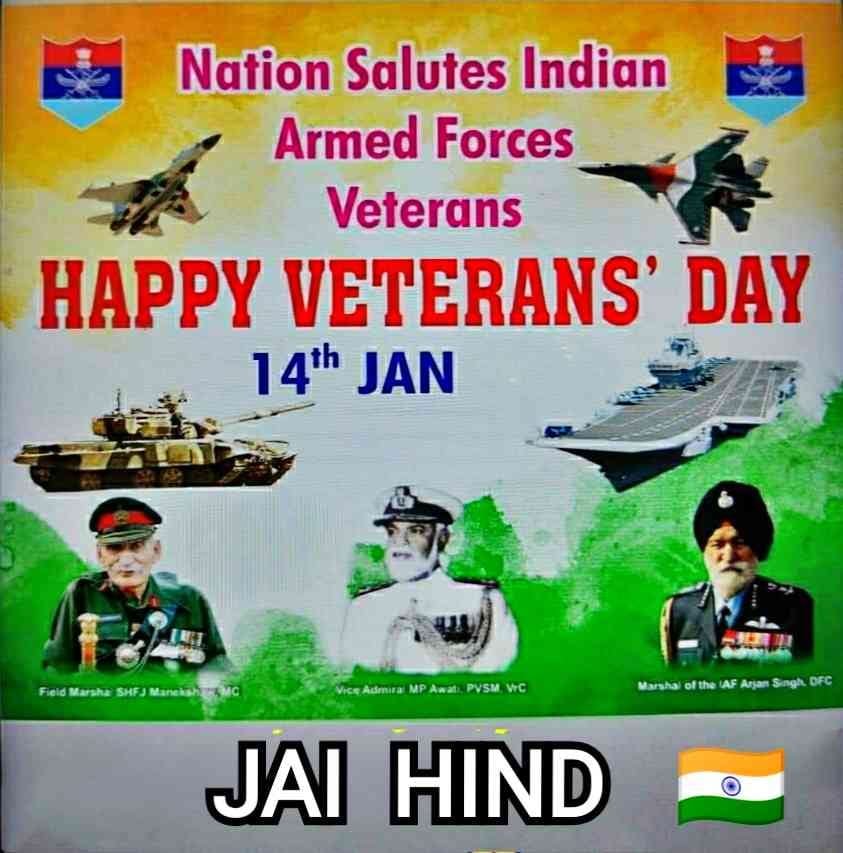











Previously, Generals would write notes of protestation against this or that event which they regarded as political, likely to adversely influence the homogeneity and secular credentials of the armed forces. That seems to be changing. Now, Navy, and Air Force Chiefs have written letters to the President and PM following hate speeches at Dharam Sansad. Not a single Army Chief, according to Admiral Arun Prakash, was willing to sign on the letter.

SHRILL VOICES: Religious congregations with rhetoric having implications for the secular fabric of the country needs to be condemned. PTI

THE new year began with a communally corrosive hangover following disruptions in churches and calls from a Dharma Sansad (religious parliament) for genocide. Another disturbing carryover is the discernible politicisation of the military underway.
I joined the Army when Gen Thimayya (Timmy) was the COAS — a period that led up to the 1962 debacle when Prime Minister Nehru and Defence Minister VK Krishna Menon sought pliable Generals. I listened to Timmy’s address to officers in Srinagar that all was well in the Army following his resignation after his brush with Nehru and Menon, its withdrawal on Nehru’s urgings and subsequent unfounded rumours of a coup. It was not a happy start for independent India’s military with Menon also gunning for the outspoken Maj Gen Sam Manekshaw. Bar this short-lived but reputation-scarred decade, the military has remained firmly under civilian control and apolitical. No other Army Chief has ruffled feathers except the flamboyant and intellectually rich Gen Sundarji while Gen VK Singh created a storm in a teacup.
Fast-forward to late Gen Bipin Rawat. When he was appointed India’s first CDS, he was already beholden to the BJP government for superseding two senior Generals in making him the Army Chief. It is the incumbent government that created conditions for the negative political reorientation of the services. During Vajpayee’s rule, Defence Ministers George Fernandes (who sacked Navy Chief Admiral Vishnu Bhagwat) and Jaswant Singh (Army Major) would never have allowed the military to deviate from its compass bearing of being apolitical, professional and secular. There was no straying off course.
Prime Minister Modi’s grandstanding as the strong political leader of the armed forces commenced with the modest but politically exaggerated cross-border Uri surgical strikes. For the first time in the history of elections were pictures of Director General Military Operations, the strapping Sikh Lt Gen Ranbir Singh emblazoned on banners and posters alongside pictures of Modi and Amit Shah for the UP elections despite the Election Commission forbidding involving the military.
Three years later, Balakot air strikes ensured the BJP’s 303-seat victory in the General Elections; Balakot and the politics that engulfed it became folklore. The soldier was inveigled into domestic politics. The entrapment of the military and veterans began with an imperfect One Rank, One Pension which is locked in court. Tying rakhis to soldiers, carrying Diwali sweets for frontline troops and making much of them through symbolism won over soldiers. Troops reciprocated carrying yoga mats, constructing over-bridges and clearing garbage from mountains, thereby enabling officers to ingratiate themselves with the political class. The 60-year-old autonomous Institute of Defence Studies and Analyses was prefixed with the name of former Defence Minister Manohar Parrikar and for some time, carried Modi’s pictures on flyers.
Unobtrusively, SOPs were changed to apparently Hinduise, even saffronise the secular fighting forces. At the Artillery Regimental Centre in Deolali, arti was recited on parade with soldiers clapping. Enshrined on a prominent boulder on the parade ground was the symbol Om. Arti and Om celebrate the majority religion. For the first time, arti was sung on parade. In other regimental centres, the parade would end with singing the regimental anthem. The ceremony now ends with Bharat Mata Ki Jai. When Gen Naravane took over as the COAS, he said at his first press conference that he will be guided by the Constitution of India. He has not issued any reprimand.
Rawat at the helm was seen to be compliant with the government agenda. He associated with some events that were clearly political and supportive of the Central and state governments. He even skipped a Navy Day event for this. The political tamasha at the Purvanchal Expressway where the three services were key participants marked the height of brazenness. It seems Modi does not worry about the military correctness of involving soldiers in political events. The then Army Chief Gen Tappy Raina, when requested by Defence Minister Bansi Lal to provide water trucks for a political rally, refused to oblige. The Army’s evaluation of good order and military discipline is extremely strict and any violation falls in its net. Last year, a Lieutenant General Corps Commander, responsible for a quarter million men, had the temerity of tweeting ‘Happy birthday PM Modi’ and got away with wholesale sycophancy.
Another symbol of politicisation is acquiescence. Previously, Generals would write notes of protestation against this or that event which they regarded as being political, likely to adversely influence the homogeneity and secular credentials of the armed forces. That seems to be changing. Now, Navy and Air Force Chiefs have written letters to the President and Prime Minister for protection and preservation of communal harmony in the military following hate speeches at Dharam Sansad. Not a single Army Chief, according to Admiral Arun Prakash, was willing to sign on to the letter. Neither the President who is the supreme commander of the armed forces, nor the Prime Minister who is the operational executive, nor even the Home Minister has said a word condemning the organised event.
The ruling dispensation has excelled in high tokenism and higher symbolism towards defence and national security, even if it will not walk the talk in funding the military’s modernisation programmes. In its seven years, the average GDP share for defence has declined to around 1.6 per cent. Monies for modernisation are getting less than even committed liabilities — this after the LAC has become LoC. Gen Rawat’s biggest contribution to the armed forces would have been in arresting and rolling back the tide of politicisation begun in 2016 that will certainly damage the ethos, integrity and traditions of the armed forces, which in turn, will make dysfunctional his transformational defence reforms.
Celebrating atmanirbharta, the post-Independence privilege of importing Scotch in canteens has been banned. But the PM’s convoy has been upgraded from BMW to the Rs 12-crore Maybach Mercedes Benz.
China not doing enough to defuse border tension

The 14th round of Corps Commander-level talks between India and China, held weeks after Beijing implemented a new border law and renamed 15 places in Arunachal Pradesh on its map, ended without any breakthrough on disengagement from Hot Springs in eastern Ladakh. The two countries have been locked in a tense border standoff for the past about 20 months. The 13th round, held in October last year, had ended in a stalemate as the Indian Army’s ‘constructive suggestions’ regarding the friction points were dubbed ‘unreasonable and unrealistic’ by the Chinese. Chief of Army Staff Gen MM Naravane made it clear on Wednesday that the threat in eastern Ladakh had ‘by no means reduced’ and the Army would continue to deal with the Chinese military in a firm manner. He also asserted that if a war was thrust upon India, the country would come out victorious. His confidence speaks volumes about India’s battle-readiness and operational preparedness against a formidable foe.
China’s systematic build-up of infrastructure along the LAC has elicited a strong response from India, which has been raising structures of its own to fortify its defences and facilitate faster movement of troops. At the same time, New Delhi’s eagerness to settle differences through dialogue underlines its commitment to peace and stability in the region. However, China’s aggressive posturing and its cartographic interventions — described by India as a ‘ridiculous exercise’ to support untenable territorial claims — are proving to be major stumbling blocks.
Even as India expects China to see reason sooner than later, there are indications that Islamabad may prioritise geo-economic interests over geo-strategic rivalry. Pakistan, which is in the throes of a deep financial crisis, is set to unveil its new National Security Policy, which will revolve around economic security. An official has been quoted as saying that Pakistan is not seeking hostility with India ‘for the next 100 years’, holding out hope for the resumption of dialogue and revival of trade ties — even if the Kashmir issue remains unresolved. These are good tidings, but the proof of the pudding, of course, is in the eating.
20 Army personnel were killed in the operation while fighting Chinese troops in eastern Ladakh on June 15
A view of Galwan Memorial. PTI file
Leh, January 13
The Ladakh administration granted Rs 5 lakh each as ex-gratia to the kin of 14 soldiers who were killed in Operation Snow Leopard in Galwan Valley along the Line of Actual Control (LAC) in the Union territory, officials said on Thursday.
As many as 20 Army personnel were killed in the operation while fighting Chinese troops in eastern Ladakh on June 15.
According to four orders issued by the Home Department of Ladakh, kin of 14 soldiers who laid down their lives fighting Chinese aggression in Galwan Valley were given Rs five lakh each as ex-gratia.
According to the order, the relief was given to Bikumalla Santhoshi wife of Col Bikumalla Santosh, Jageshwari Bai mother of Sepoy Ganesh Ram, Minu Kumari, wife of Sepoy Aman Kumar, Baby Devi, wife of Sepoy Kundan Kumar, Mamta Orang, mother of Sepoy Rajesh Orang.
Ritee Devi, wife of Havildar Sunil Kumar, Kapra Hansda, mother of Sepoy Ganesh Hansda, Rumpa Roy, wife of Havaldar Bipul Roy, and Prakash Kaur, mother of Sepoy Gurtej Singh, were given the remuneration.
Manju Devi, mother of Sepoy Jai Kishore Singh, Laxmi Mani Soren, wife of Naib Subedar Nuduram Soren, Malati Pradhan, mother of Sepoy Chandrakanta Pradhan, Dharma Devi, mother of Sepoy Chandan Kumar, and Rehka Singh, wife of Naik Deepak Singh, were also given the relief, the order issued by Additional Secretary (Home Department) Tashi Dolma said

Leh, January 13
The Ladakh administration granted Rs 5 lakh each as ex-gratia to the kin of 14 soldiers who were killed in Operation Snow Leopard in Galwan Valley along the Line of Actual Control (LAC), officials said on Thursday. As many as 20 Army personnel were killed in the operation while fighting Chinese troops in eastern Ladakh on June 15.
According to the orders issued by the Home Department of Ladakh, kin of 14 soldiers who laid down their lives fighting Chinese aggression in Galwan Valley were given Rs 5 lakh each as ex-gratia. —
Turkey, India and China have purchased the S-400 systems but only companies from Turkey and China have been sanctioned under CAATSA, a US domestic law introduced during the Trump era, India has so far not been acted against
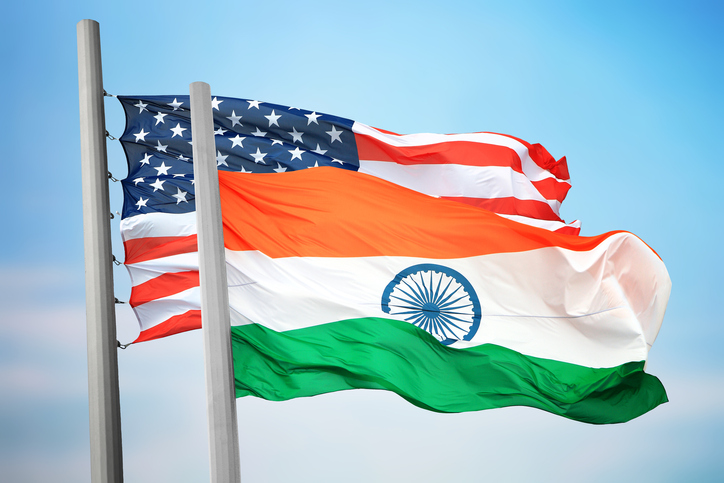
New Delhi, January 13
The US has expressed its dilemma over considering sanctions for India’s purchase of Russia’s S-400 missile defence systems.
“I think we’ve to look at what the balance is… The administration made clear that it is discouraging India from proceeding with the acquisitions of Russian equipment and there are important geostrategic considerations particularly with relationship to China,” said James O’Brien, US President Joe Biden’s nominee as Coordinator for Sanctions Policy over Countering America’s Adversaries Through Sanctions Act (CAATSA).
“It’s difficult to compare the two situations – a NATO ally (Turkey) that is breaking with legacy and India, a partner of growing importance, but that has legacy relationships with Russia,” added O’Brien James while speaking before the US Senate at his confirmation hearing for the post.
Turkey, India and China have purchased the S-400 systems but only companies from Turkey and China have been sanctioned under CAATSA, a US domestic law introduced during the Trump era, India has so far not been acted against.
India had signed a $ 5 billion deal in October 2018 with Russia to buy five units of the S-400 air defence missile systems though the US administration had warned that such a move may attract sanctions. But in recent times, US Senators have also started flagging India’s purchase of naval warships from Russia.
Asked about the possibility of US sanctions for buying the S-400 missile systems, the Ministry of External Affairs (MEA) had said in November last year that ,“India pursues an independent foreign policy and its defence acquisitions are guided by its national security interests.’’
The two Senators, Mark Warner and John Cornyn, have said that though India has signed a deal with Russia for the purchase of the S-400 missile system but such transactions were on a decline. A Congressional Research Service (CRS) report has noted that, “the Indian military cannot operate effectively without Russian-supplied equipment and will continue to rely on its weapons systems in the near and middle terms”.
When it comes to the crunch, New Delhi may not need the helping hand of the two co-chairs of the India Caucus in the US Senate as External Affairs Minister S Jaishankar said in 2019, “I am reasonably convinced of the powers of my persuasion. It would be my hope that people understand why this transaction is important for us.”
The 14th round of Corps Commander-level meet that concluded at 10.30 pm on Wednesday after 13 hours was held on the Chinese side of the Chushul-Moldo border point
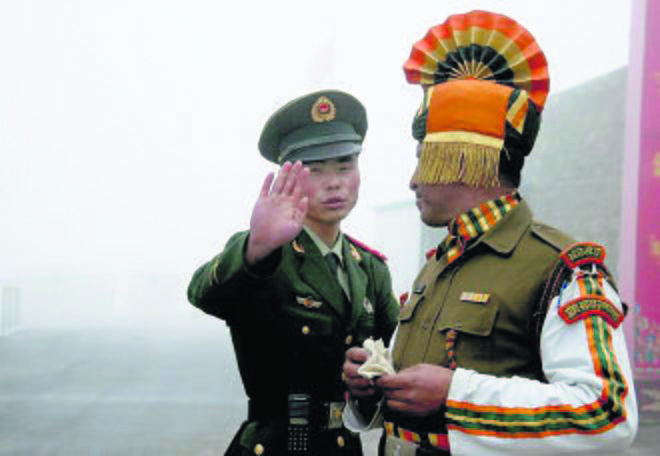
Ajay Banerjee
New Delhi, January 13
Almost 20 months into the military standoff, India and China have yet again failed to agree on resolving all points of friction along the Line of Actual Control (LAC) in eastern Ladakh.
Edit: In for the long haul
The 14th round of Corps Commander-level meet that concluded at 10.30 pm on Wednesday after 13 hours was held on the Chinese side of the Chushul-Moldo border point.
MoD statement says…
No blame game
The statements issued this time were not as blunt as those issued after the 13th round of talks on Oct 10, 2021, when they blamed each other for the failure of the talks.
Hot Springs logjam
‘Unconstructive’ remarks
Hope certain individuals refrain from making ‘unconstructive’ remarks. China on General’s remarks
Sources told The Tribune there would be no immediate disengagement of troops from Patrolling Point (PP)-15, also known as Hot Springs. Resultantly, Indian forces would stick to their locations and positions at the LAC. Weapons, equipment, tanks, artillery guns and other high technology surveillance systems would also be around. Both sides have some 75,000 troops in the sector.

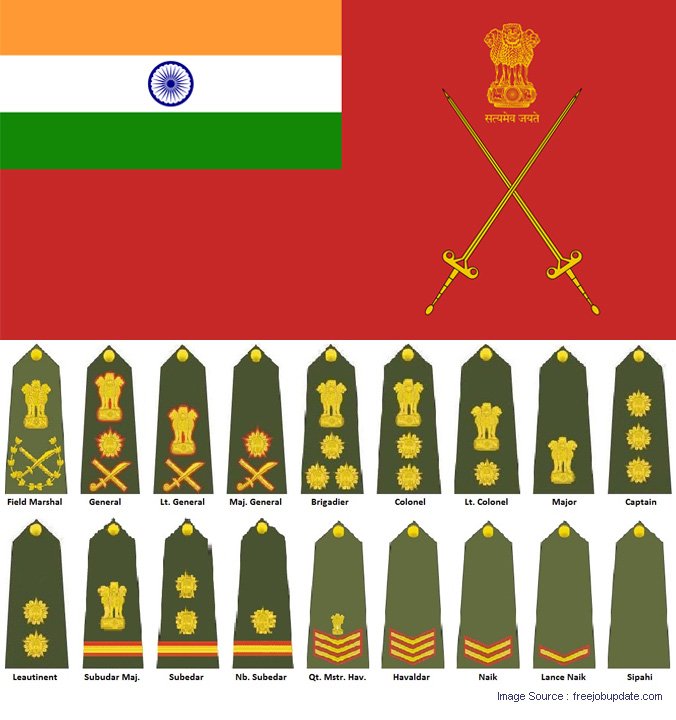
Vijay Mohan
Chandigarh, January 12
Taking up a petition filed jointly by 18 officers of the rank of Major General, who were drawing pension that was lower than their juniors, the Armed Forces Tribunal (AFT) today sought an explanation from the Ministry of Defence and the pension disbursing authorities.
“The tribunal’s bench comprising Justice Rajendra Menon and Lt Gen PM Hariz today admitted the petition for final adjudication and asked the government and the Principal Controller of Defence Accounts (Officers) to show cause as to why the petition should not be allowed,” Col Indra Sen Singh (retd), counsel for the petitioners, said.
The officers are claiming parity in pay and pension parity with officers of the rank of Brigadier. The situation has arisen due to the Military Service Pay being introduced in the Sixth and Seventh Central Pay Commission as part of basic pay of officers of the three services up to and including the rank of Brigadier and equivalent ranks in other services. Officers of the rank of Major General and above are not entitled MSP.
Hence, a Major General and equivalent rank officer in the Air Force and Navy, after being promoted to the said rank, get lesser pay than Brigadier and consequently lesser pension after retirement.
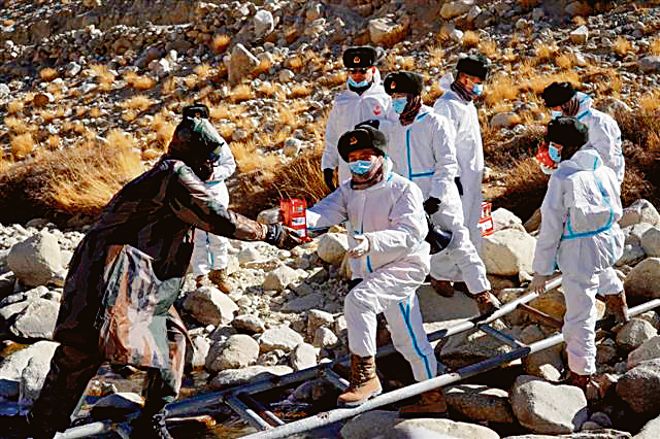
Indian and Chinese soldiers exchange sweets along the LAC. File
New Delhi, January 12
Military Commanders of India and China were locked in a marathon meeting on Wednesday to resolve the issues at the Line of Actual Control (LAC) in eastern Ladakh.
The 14th round of Corps Commander-level talks on the border standoff were held on the Chinese side of the Chushul-Moldo meeting point. The talks started around 9.30 am and continued late into the night. There was no official statement on the dialogue till the filing of the report. The major focus of talks would be on disengagement in the Hot Springs area, called Patrolling Point 15, in eastern Ladakh. The issue of the Depsang Bulge, a 972-sq km plateau, would be taken up after the Hot Springs gets resolved.
Not against Siachen demilitarisation
We are not averse to demilitarisation of Siachen Glacier. However, Pak must accept the Actual Ground Position Line (AGPL) before any disengagement takes place. —General Naravane
The troop build-up on either side, for now, shows no signs of getting back to the pre-April 2020 levels.
Meanwhile, Army Chief General MM Naravane said talks were important to resolve the border issues, though each round might not “have an outcome”.
The threat level at the LAC “has not reduced” and force levels were more or less the same, he said at a press conference in the Capital ahead of Army Day (January 15). The Army Chief said: “We will continue to deal with the PLA (People’s Liberation Army) in a firm and resolute manner. The necessary safeguards are in place to deal with any contingency.”
Speaking on how the future could pan out along the 3,488-km LAC, the Army Chief mentioned a three-step process to ease the standoff: disengagement of troops, de-escalation of tension followed by de-induction of all troops, weapons and equipment.
“Till these steps are completed, we have to remain there (LAC),” General Naravane said, asserting that the Army had the highest level of operational preparedness along the LAC even as dialogue was on with China.
To a question on India’s response to the standoff, he said the Army response had been robust to a PLA attempt to unilaterally change the status quo at the LAC.
Lt Gen Anindya Sengupta, the newly appointed Commander of the Leh-based 14 Corps, led the Indian delegation at the talks. The Chinese team was to be headed by South Xinjiang Military District chief Maj Gen Yang Lin.
The 13th round of talks, which took place on October 10, had ended in a stalemate.
New Delhi, January 12
Pakistan is “not seeking hostility with India for the next 100 years”, said an official in Islamabad while offering a sneak preview to the media of its first-ever security policy.
“Economic security will be the central theme of the new national security policy…. But geo-economics does not necessarily mean we overlook our geo-strategic and geo-political interests,” Pakistani media quoted the official as commenting on the unclassified 50 pages of the policy which will be unveiled by Pakistan PM Imran Khan on Friday. Another 50 pages of the policy will remain classified.
Don’t want hostility with delhi for 100 yrs
Economic security will be the central theme of the new national security policy. We are not seeking hostility with India for the next 100 years. The new policy seeks peace with immediate neighbours. —Pakistan media quoting an official
Kashmir will be a “vital national policy” issue for Pakistan, but the new policy seeks peace with immediate neighbours by normalising trade and business ties. “The national security policy for 2022 to 2026 seeks a shift in Pakistan’s approach from geo-strategic to geo-economics,” said the official in a background briefing for journalists. But, he clarified there was no prospect of rapprochement with India under the current government in New Delhi.

























































